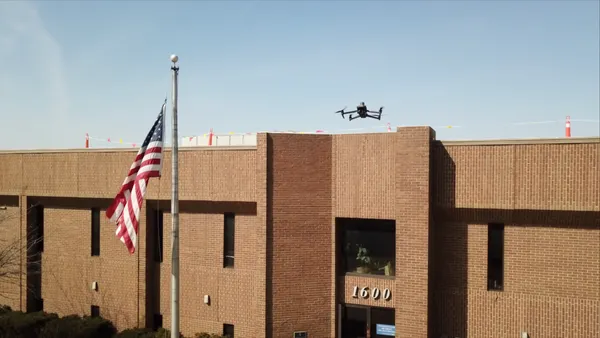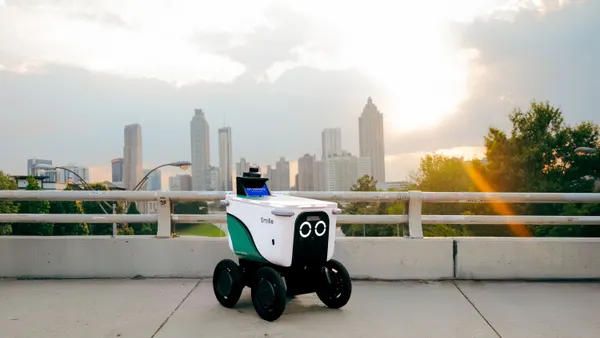Government technology leaders are helping to address staffing shortages and improve employee and constituent experiences, while also driving organizational and IT benefits and increasing their agencies’ agility.
After all, many public service agencies cannot compete with the private sector’s deeper pockets. For some, perks like stock options and international business travel can be more alluring than serving the community.
For others, the allure of rewarding work in an environment that provides plenty of time for engaging projects and tasks is worth more than a huge salary or a triple-barrel title. Frequently, they enjoy the opportunity to work in and for their community, job stability and the pension plans that these careers afford.
Setting up for success
Although career paths are varied and can meander, the route to delivering these benefits is clear. A comprehensive cloud-first platform—combined with a dashboard that provides visibility across your networks delivers the power to easily integrate, modify and update technologies. By advancing your organization’s use of scale and automation, you can simplify network operations and improve employee and constituent experiences.
This is crucial, analysts say.
“With so many people switching to jobs that better accommodate their needs holistically, employers needed to invest in automation—automating workflows to facilitate remote onboarding and task and process automation enables workers new to their jobs to have the ability to focus on outcomes over process,” Amy Loomis, Research Vice President of Future of Work at IDC, told CIODive.com.
There are other benefits as well.
Pleasing people
Recruiting and retaining employees is a top concern for most government managers, regardless of department. Automation delivers big productivity gains. In one report, 75% of technology leaders reported time savings of four hours per person per 40-hour week. By eliminating these once-manual, often error-prone tasks, IT professionals can spend more time on projects that drive the results that residents or visitors experience—results employees can be proud of.
Pay rates for IT professionals as a whole are expected to rise at a median rate of 4% in 2023, despite much-publicized layoffs. Plus, the boredom—or worse, “boreout,” which is chronic boredom that can come from repetitive or seemingly meaningless work, may lead to absenteeism, health problems or quitting.
Discovering opportunities
Your team members can, perhaps, spend some of this time on training or further automating and customizing their networks. Open-source APIs empower developers to quickly and simply manage tedious tasks like adding new organizations, networks or devices or build a dashboard for field technicians or use cases for a particular agency or division.
Alternatively, consider partner solutions that add capabilities such as custom splash pages, crowd intelligence or alert management.
Working anywhere
In some roles, delivering on the promise of hybrid work is another important employee criteria. With a platform-based cloud-managed solution, your organization can—at scale—simply and securely deploy systems anywhere, reducing the multiple costs associated with truck rolls. The city of Stad Menen, Belgium, saw more than 50% reduction in on-site travel by IT when addressing networking issues after it deployed a cloud-managed network platform that featured automation at scale.
Even employees who haven’t traditionally had the opportunity to work, at least occasionally from home or the road, are getting more of what Gartner calls “hybrid flexibility.” When the five-person IT team for the city of New Castle County, Delaware, deployed new wireless, switching and security across more than 25 sites, there were multiple benefits, including faster speeds, more reliability, reduced help-desk calls and enhanced protection.
Government workers can access the network from the parking lot, which makes them more efficient and improves both response times and public safety. Police officers often upload evidence and body-camera footage from their vehicles via a secure portal and government administrators can access data instantly in case of an event.
Improving experiences
You can help your organization defray utilities costs and enhance employee experiences with smart cameras and sensors.
Cloud-managed sensors automatically adjust room temperatures to comfortable levels, avoiding blasts of unnecessary, environmentally unfriendly and costly air conditioning or heat. They also help ensure areas are kept sanitary by maintaining the cleanliness that employees and constituents expect and they can monitor air quality to avoid common contaminants.
Happier constituents
When IT rolls out new applications faster and when updates don’t crash systems or take hours to deploy, end users are happier. They’re not calling the help desk or contacting support via email or chat-bot. That’s a good day for technology professionals, whether or not their role officially involves support.
Brooklyn Public Library offers a wide array of services because their IT team is no longer tied up with manual processes across the library’s 59 individual sites, said Selvon Smith, Vice President, Information Technology and CIO.
“We don’t have enough people on the IT team to be at every branch, so having a remote system allows us to do way more with fewer human resources and without the ability to do that, the branches wouldn’t have these programs or the proper tools to host them,” he added.
Interested in boosting productivity and experience at your agency? Visit Cisco Meraki government.










